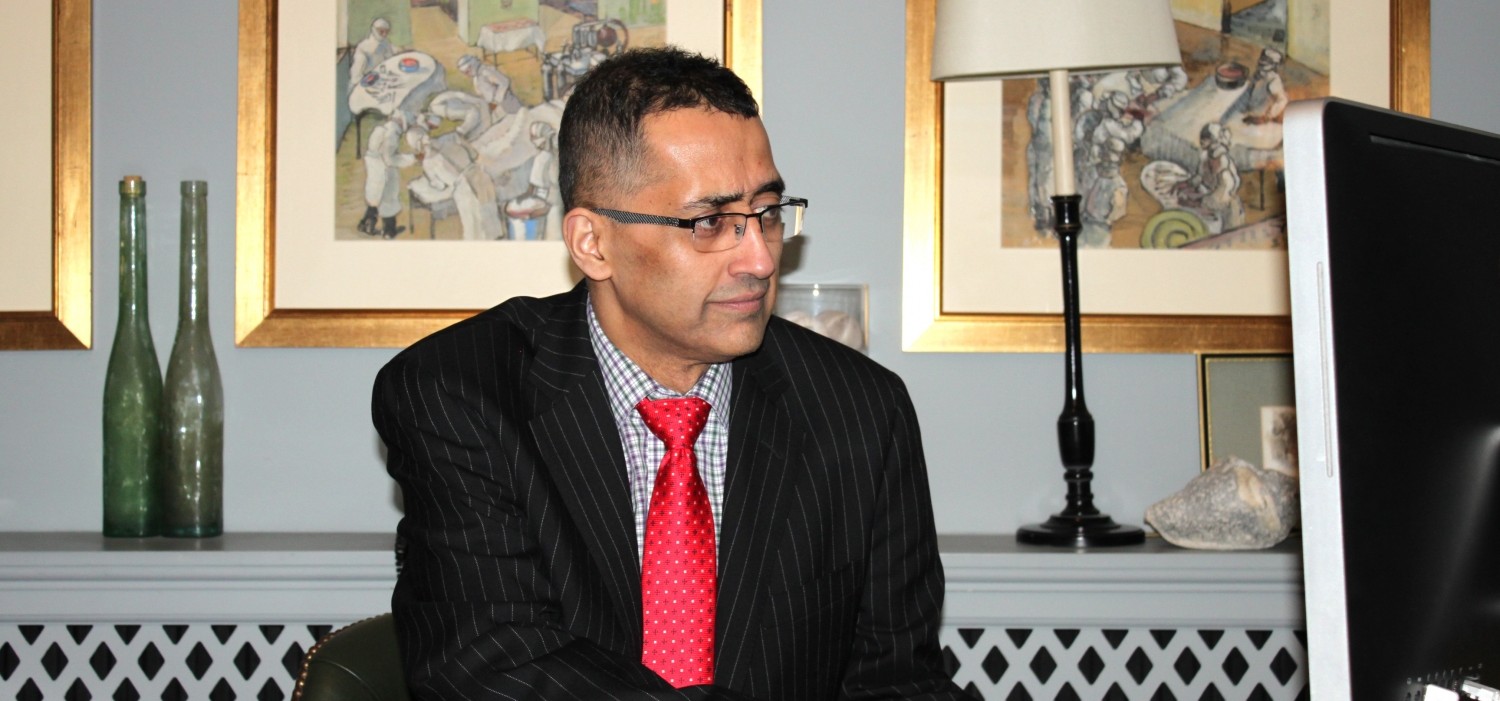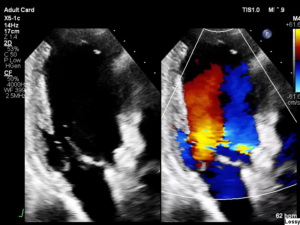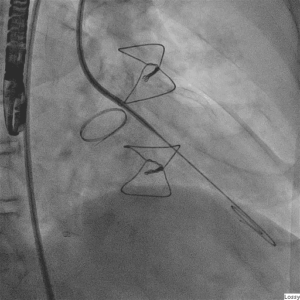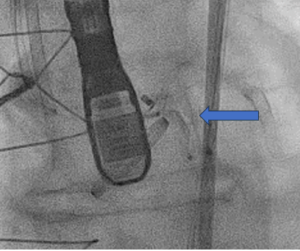Why Choose Dr. Iqbal Malik at London Cardiovascular Clinic?
When making a healthcare decision, choosing the right provider is important. At London Cardiovascular Clinic, we offer exceptional care and expertise for paravalvular leak closure procedures. Here’s why we are the preferred choice:
- Recognised Expertise: Led by Dr. Iqbal Malik, a leading Consultant Cardiologist, we bring extensive experience and a patient-centred approach to provide the best possible results. We have access to the best imaging, and Dr. Malik is a recognised world expert in this procedure.
- Personalised Care: We understand that every patient is unique. Our dedicated team provides tailored care addressing your specific needs and concerns. From the initial consultation to postoperative care, we will be with you every step of the way.
- Comfortable and Convenient Experience: Your well-being is our top priority. Our clinic provides a relaxed and welcoming environment, making your stay as pleasant as possible. We also offer flexible appointment scheduling to accommodate your needs, making the experience less stressful.
Do I Need Paravalvular Leak (PVL) Closure?
A paravalvular leak or leaky heart occurs in 5% to 15% of patients following surgical valve replacement. This condition, characterised by blood leaking around the valve, can lead to various symptoms and complications if left untreated.
Leaks can emerge slowly over time (due to loosening of some of the surgical surures, or be acute, for example, after a valve infection. Once there is enough leakage, heart failure, or haemolysis (anaemia) can follow.
Common leaky heart valve symptoms include:
- Shortness of breath
- Swelling in legs, ankles, or feet
- Heart palpitations
- Fatigue, due to anaemia
- Heart murmur
In some cases, the symptoms might not be present. However, if you experience any of those, it is important to consult a cardiologist to determine if leaky heart valve treatment is necessary. Echocardiography commonly confirms a paravalvular leak, and your cardiologist will help you choose which strategy to use in treating your condition.
Below, you can see echocardiography at the aortic valve level showing a paravalvular leak:
How to Prepare for a Paravalvular Leak Closure?
Before undergoing a Paravalvular Leak (PVL) closure procedure at the London Cardiovascular Clinic, you’ll have a comprehensive consultation with Dr. Iqbal Malik. Dr. Malik’s ability to explain complex medical problems in an easy-to-understand manner will guarantee you are well-informed throughout the process.
Before a paravalvular leak closure, you might undergo several tests, including:
- Echocardiogram (TTE): To confirm a paravalvular is present.
- Transoesophageal Echocardiography (TOE): Provides detailed images of the heart’s structure. It defines where the leak is coming from.
- Blood Tests: These tests assess your overall health and check for any underlying conditions, such as High Blood Pressure, High cholesterol, Diabetes or Anaemia.
- Cardiac MRI/CT Scanning: Assesses the location and impact of the paravalvular leak.
After reviewing the results of these tests, Dr Malik will discuss with you individual instructions on how to prepare for your paravalvular leak closure. This might include dietary and/or medicinal adjustments.
CT scan analysed in 3Mensio program to assess PVL:
What Happens During a Paravalvular Leak (PVL) Closure?
Understanding the procedure can help alleviate any anxiety you may have. Leaking heart valve surgery is performed using a technique similar to an angiogram or angioplasty and typically involves the following steps:
- Preparation and Anaesthesia: Beforehand, you will be given a general anesthetic. The procedure will be guided using X-rays and transoesophageal echocardiography (TOE). TOE involves placing an ultrasound probe in your throat to provide detailed images of your heart, which helps the cardiologist navigate accurately.
- Catheter Insertion: A small incision is made in the groin area, through which a catheter is inserted into a leg artery or vein. This catheter is carefully threaded up to the heart, guided by real-time images from X-rays and TOE. The catheter is made to cross the leak using a thing wire as a railroad.
- Device Placement: Once the catheter reaches the heart, an umbrella-shaped closure device is passed through it. The device is positioned across the gap between the leaking valve and the heart tissue. The cardiologist tests the device’s stability and ensures it functions correctly before deploying it.
- Device Deployment and Completion: After confirming that the device effectively seals the leak, it is deployed. The catheter is then removed, and the incision site in the groin is closed with pressure to minimise bleeding.
Below are images of a catheter being inserted and a device placed during a PVL closure:
This minimally invasive procedure typically lasts one to two hours and avoids the need for traditional open-heart surgery. Leaking heart valve surgery significantly reduces recovery time and overall disruption compared to more invasive surgical options.
Below is a picture of a “plug” device used to block up the leak at the side of an artificial valve:
Recovery After a Paravalvular Leak Closure
Most patients usually spend just one night in the hospital and experience a quick 2-4-week recovery at home. Post-procedure recovery is generally smooth and involves:
- Medications: You’ll likely be prescribed blood thinners to prevent blood clots from forming on the device.
- Wound Care: Instructions on how to care for the incision site to prevent infection, keeping it dry and clean.
- Physical Activity Restrictions: Guidance on when you can resume normal activities and any activities you should avoid. Typically, we advise you to take time off gym workouts.
Later, you’ll attend a check-up appointment with Dr. Malik. He will reassess your condition, check for leaks and proper valve function, and decide if further care is needed.
How Much Does a Paravalvular Leak Closure Cost?
Insurance: Most private medical insurance policies cover a private paravalvular leak closure procedure. To speed things up, please contact your insurance company before your appointment to obtain your pre-authorisation code. This will help you understand the specifics of what your policy covers and any potential out-of-pocket expenses related to the cost of leaky heart closure in the UK.
Self-funding: If you are self-funding your procedure, our price list is available upon request. For any estimation of costs, including the price for a private paravalvular leak closure procedure, please contact our office. We can provide detailed information and answer any questions you may have about the financial aspects of your leaky heart closure in the UK.
Book Your Consultation
Send us an email or complete our simple contact form to arrange your consultation with London’s top cardiologist consultant, Dr. Iqbal Malik.
Frequently Asked Questions
What Are the Risks of Paravalvular Leak Closure?
Paravalvular leak closure is a sophisticated and sometimes lengthy procedure that has certain risks. While generally safe, it’s important to be aware of the potential complications:
- Arrhythmia: There is a risk of experiencing temporary irregular heartbeats during or after the procedure.
- Bleeding: While the risk of bleeding is minimal, it can occur at the site where the catheter is inserted into the vein or artery.
- Device Migration: Although rare, it’s possible that the closure device could move from its intended position. If this occurs, additional procedures or adjustments may be required to ensure proper placement and effectiveness.
- Stroke: The risk of stroke is low, but it is a potential complication that can occur. Preventative measures, such as blood-thinning medications, are used to minimise this risk.
- Increased Valve Dysfunction: There is a slight chance that the umbrella device might disrupt the function of the artificial heart valve. This is a rare occurrence but can be a consideration in some cases.
- Hemolysis: Making a big hole a smaller hole can make blood cells going through it shatter, causing anaemia.
Overall, while some of these risks are higher compared to angioplasty, they are significantly lower than those associated with traditional open-heart surgery or a redo valve surgery. The benefits of paravalvular leak closure typically outweigh these risks, making it a preferable option for many patients.
To put your mind at ease, see a live paravalvular leak closure performed by Dr. Iqbal Malik:
Paravalvular Leak Closure of the Aortic valve – Dr Iqbal Malik
What Are The Benefits of Paravalvular Leak Closure?
Paravalvular leak closure offers several advantages over traditional open-heart surgery, making it an appealing option for many patients:
- Shorter Hospital Stay and Recovery Time: Most patients spend just one night in the hospital and can often return to their daily activities much sooner compared to the extended recovery times associated with open-heart surgery.
- Lower Risk of Infections: The minimally invasive nature of the procedure reduces exposure to potential sources of infection.
- Smaller Scars and Incisions: Paravalvular leak closure is performed through a small incision in the groin, which results in minimal scarring.
These benefits come from the minimally invasive approach of paravalvular leak closure, which avoids the need for more invasive procedures and generally leads to a smoother and quicker recovery.
Can It Be Fixed Without Surgery?
If your damaged heart valve requires treatment, it typically will not improve on its own. Without intervention, there is an increased risk of developing a serious heart infection known as endocarditis, which can lead to further complications.
Luckily, there are catheter-based, minimally invasive techniques available that can effectively address the issue without the need for traditional open-heart surgery. These innovative methods offer a viable alternative, allowing for treatment with less risk and a faster recovery compared to more invasive surgical options.








